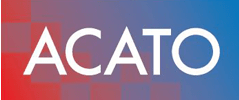Understand ISO 9001 Audit Costs for Service Providers

ISO 9001 Certification Cost for Service Providers Explained: Understanding Audit Fees and Financial Factors
Service providers often face uncertainty when budgeting for ISO 9001 audit costs, with fees varying based on audit type, organizational complexity, and resource allocation. This guide clarifies typical certification audit fees, key cost drivers, cost-reduction strategies, tangible benefits and ROI, and the step-by-step certification journey. Readers will learn:
- Audit types and fee ranges
- Influencing factors like company size and QMS maturity
- Techniques to manage and lower expenses
- The value proposition and payback of certification
- The ISO 9001 audit process from initial assessment to surveillance
How Much Does ISO 9001 Certification Cost for Service Providers?
ISO 9001 certification cost encompasses initial audits, ongoing surveillance, recertification, and indirect expenses. Understanding these components ensures accurate budget planning and avoids surprises.
What Are the Typical Initial Certification Audit Costs?

Initial certification involves two stages: document review (Stage 1) and on-site evaluation (Stage 2). Stage 1 verifies QMS documentation, while Stage 2 assesses implementation and effectiveness.
| Audit Phase | Fee Range (USD) | Scope Description |
|---|---|---|
| Stage 1 Document Review | 1,000 – 3,000 | Verifies QMS structure and readiness |
| Stage 2 On-Site Audit | 2,000 – 7,000 | Examines process compliance across service delivery |
Initial review secures foundational compliance and streamlines the on-site audit, reducing follow-up activities and accelerating certification.
How Much Do Surveillance and Recertification Audits Cost?
- Annual surveillance audits typically range from 1,000 to 2,500 USD.
- Triennial recertification averages 2,000 to 7,500 USD, depending on service scope and changes since the last audit.
Ongoing assessments reinforce QMS discipline and prevent regression, ensuring that service quality remains consistent year after year.
What Hidden and Ongoing Costs Should Service Providers Expect?
Beyond auditor fees, indirect costs include:
- Internal staff time for documentation updates and management reviews.
- Training expenses for employees to align with QMS procedures.
- Software or digital QMS subscriptions for document control and record-keeping.
These costs typically add 10%–20% overhead to total audit fees and must be incorporated into financial forecasts to maintain budget accuracy.
What Factors Affect ISO 9001 Audit Costs for Service Providers?
Several interrelated variables determine certification fees. Recognizing these cost drivers helps service firms optimize investment.
How Does Company Size and Complexity Impact Certification Fees?
Larger organizations or those with multiple service lines require more extensive audits. Audit duration and team size scale with:
- Number of employees
- Geographic locations
- Variety of service offerings
Increased scope translates directly into higher auditor days and travel costs.
What Role Does Existing QMS Maturity Play in Cost Determination?
A well-developed QMS reduces audit preparation time and on-site clarification. Mature systems often yield:
- Shorter Stage 1 document reviews
- Fewer nonconformities during assessment
- Lower consultant reliance
Enhanced readiness accelerates certification and lowers overall expenses.
How Do Certification Body Choice and Location Influence Costs?
Accredited bodies vary in fee structures based on reputation, accreditation scope, and regional overhead. Local bodies often charge less travel and logistics, while highly regarded international bodies may command premium rates for specialized expertise.
When Are External Consultants and Training Necessary, and How Do They Affect Costs?
Consultant engagement can expedite QMS implementation and mitigate critical nonconformities. Typical consultancy fees range from 100 to 300 USD per hour or 3,000 to 15,000 USD per project, but they often shorten audit durations and reduce rework.
How Does Internal Resource Allocation Affect Overall Certification Cost?
Assigning dedicated staff to manage documentation, conduct internal audits, and liaise with auditors limits unexpected expenses. Efficient resource planning can lower indirect overhead by up to 15% of total audit fees.
How Can Service Providers Manage and Reduce ISO 9001 Certification Costs?
Proactive preparation and strategic execution minimize audit days and hidden fees while preserving QMS integrity.
What Are Effective Gap Analysis and Preparation Techniques?
Conducting a pre-certification gap analysis identifies missing procedures and nonconformities early. This prevents costly corrective actions during the formal audit and reduces auditor verification time.
When Should Service Providers Use Internal Expertise vs. External Consultants?
Internal subject-matter experts should lead process documentation when QMS familiarity is strong. External consultants add value when specialized guidance or accelerated timelines are required, balancing cost with expertise.
How Can Documentation and Processes Be Streamlined to Lower Costs?
Centralizing records in an eQMS platform simplifies version control and auditor access. Standardized templates and clear process maps reduce review time and auditor queries.
What Are the Benefits of Phased Implementation Approaches?
A phased rollout—focusing on one service unit at a time—spreads costs and builds internal competence gradually. Early phases refine documentation and staff training, lowering subsequent audit durations.
How to Choose the Right Certification Body for Cost Efficiency?
Compare quotes from multiple accredited bodies, evaluating fee transparency, included services, and audit travel logistics. Bodies offering bundled surveillance and recertification packages often deliver the best value.
What Budgeting and Financial Planning Practices Help Control Certification Expenses?
Allocating a contingency fund of 10% for unexpected audit days, scheduling audits during off-peak travel seasons, and allocating cross-functional responsibilities ensure predictable spending and avoid budget overruns.
What Are the Benefits and ROI of ISO 9001 Certification for Service Providers?

ISO 9001 investment yields measurable returns across customer satisfaction, operational performance, and market positioning.
How Does ISO 9001 Improve Customer Satisfaction and Loyalty?
Standardized processes deliver consistent service quality, reducing errors and enhancing client trust. This repeatable reliability directly supports higher retention rates and referral growth.
In What Ways Does Certification Enhance Operational Efficiency and Reduce Costs?
By emphasizing process controls and continual improvement, ISO 9001 uncovers inefficiencies and waste, often yielding 5%–10% cost savings through streamlined workflows and reduced rework.
How Does ISO 9001 Increase Market Access and Competitive Advantage?
Certification opens doors to regulated markets, tender opportunities, and partnerships that require formal quality assurance, elevating service providers above non-certified competitors.
What Risk Management and Compliance Benefits Do Service Providers Gain?
Documented risk assessment processes ensure regulatory adherence and proactive mitigation strategies, lowering liability exposure and compliance audit burdens.
How Does Certification Boost Employee Morale and Engagement?
Clearly defined roles, performance metrics, and continuous improvement initiatives foster a culture of accountability and empowerment, increasing staff satisfaction and retention.
What Case Studies Demonstrate Quantifiable ROI for Service Businesses?
| Service Case | Measured Outcome | Financial Impact |
|---|---|---|
| IT Consultancy | Reduced incident rates | Saved 20% in support costs annually |
| Healthcare Provider | Fewer compliance fines | Avoided $50,000 in regulatory penalties |
What Is the ISO 9001 Certification Process for Service Providers?
Mapping the certification journey clarifies timelines, deliverables, and cost checkpoints.
What Are the Key Steps in Implementing ISO 9001 for Service Companies?
- Gap Analysis and Planning – Assess current QMS against ISO 9001 requirements.
- Documentation Development – Create policies, procedures, and process maps.
- Internal Audits & Management Review – Verify system effectiveness and leadership oversight.
- Corrective Actions – Address identified nonconformities before the external audit.
Effective planning accelerates external assessments and controls audit fees.
How Do External Audits and Certification Body Assessments Work?
Stage 1 document review confirms QMS readiness, while Stage 2 on-site audit evaluates process execution. Auditors interview teams, inspect records, and test process performance to confirm compliance.
What Is Involved in Maintaining Certification Through Surveillance Audits?
Annual surveillance audits verify continued adherence and improvement, requiring documented evidence of internal audits, management reviews, and corrective action effectiveness.
How Long Does the Entire Certification Process Typically Take?
From initial gap analysis to certificate issuance, most service providers complete certification in 4 to 6 months. Timely preparation and stakeholder engagement drive this schedule and control associated audit costs.
Service providers that plan for audit costs, optimize QMS preparation, and leverage cost-saving strategies secure certification efficiently while unlocking customer trust, operational gains, and market expansion. With clear budgeting, phased implementation, and a deep understanding of cost drivers, organizations can maximize ROI and maintain ISO 9001 compliance with confidence.

